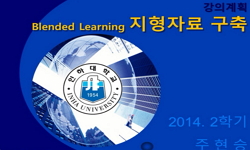The aim of this research is to examine the potential problems which can be encountered while constructing a multilingual parallel corpus, and to give concrete examples showing how multilingual parallel corpora can be useful in Korean language educatio...
http://chineseinput.net/에서 pinyin(병음)방식으로 중국어를 변환할 수 있습니다.
변환된 중국어를 복사하여 사용하시면 됩니다.
- 中文 을 입력하시려면 zhongwen을 입력하시고 space를누르시면됩니다.
- 北京 을 입력하시려면 beijing을 입력하시고 space를 누르시면 됩니다.

다국어 병렬 말뭉치의 구축과 한국어교육 연구에의 활용 = Developing and Using a Multilingual Parallel Corpus in Korean Language Education Studies
한글로보기부가정보
다국어 초록 (Multilingual Abstract)
The aim of this research is to examine the potential problems which can be encountered while constructing a multilingual parallel corpus, and to give concrete examples showing how multilingual parallel corpora can be useful in Korean language education studies.
Language education studies have expressed much interest in exploring differences in the parts of a language which cause difficulties for learners from different language groups. For this reason, the contrastive linguistic methodology has been used to examine differences and similarities between the target language and the learner’s mother tongue. In the case of applicative purpose contrastive studies, objectively extracting matching pairs from the two languages is above all important.
Parallel corpora are used as the primary data for extracting the matching pairs, and the issue of their construction and use has been actively discussed since the 1990s. Since parallel corpora have such an important meaning as the primary data in language studies, large scale projects to construct parallel corpora were conducted in each country, and in Korea a great number of parallel corpora was constructed through the Sejong Project.
Yet, when it comes to the parallel corpora constructed until now, the majority of them were parallel corpora of only two languages, and the target languages were mostly limited only to major languages. In particular, there has been no parallel corpus in Korea which included more than 3 languages, and the target languages have been extremely limited to languages such as English, Chinese, Japanese, French, German, etc.
If we examine the problem of constructing parallel corpora from a contrastive studies perspective with Korean education in mind, the existing parallel corpora, with the exception of Chinese, have no relation to the mother tongues of the main Korean learners groups at the moment. Since the contrastive studies for Korean language education have a prerequisite of promoting understanding between the mother tongues of the learners, there is a need for constructing parallel corpora of Korean and mother tongues of the learners. Moreover, there is also a need to gather the primary data for contrastive studies on the types of languages by constructing multilingual parallel corpora of not only two, but also three or more languages.
The discussion on constructing multilingual parallel corpora of three and more languages and constructing parallel corpora of minority languages is dealt with in this presentation for the first time in Korea.
In this research, we construct experimental multilingual parallel corpora of Korean and English, Vietnamese, Uzbek, Thai, and Sinhalese, and also examine the problems of constructing multilingual parallel corpora centred around Korean.
We examine the problems of data selection, hub languages, character codes, and example search which emerge in the construction of multilingual parallel corpora of minor languages. We also look into concrete examples on how to extract matching pairs of vocabulary to apply in parallel corpora by using a multilingual example search tool, which is being currently developed.
국문 초록 (Abstract)
이 연구는 다국어 병렬 말뭉치를 구축하고자 할 때 발생하는 문제를 살피고, 한국어교육 연구에서 다국어 병렬 말뭉치가 유용하게 활용될 수 있음을 실례를 들어 보이는 데 그 목적이 있다. ...
이 연구는 다국어 병렬 말뭉치를 구축하고자 할 때 발생하는 문제를 살피고, 한국어교육 연구에서 다국어 병렬 말뭉치가 유용하게 활용될 수 있음을 실례를 들어 보이는 데 그 목적이 있다.
언어교육 연구에서는 학습자가 어려워하는 학습 항목의 언어권별 차이를 밝히는 데 많은 관심을 기울여 왔다. 이를 위한 한 방편으로 목표 언어와 학습자 모어 간의 차이점과 유사점을 살피는 대조언어학적 방법론이 유용하게 활용되고 있는데, 응용적 목적의 대조 연구에서는 우선적으로 언어 간 대응쌍을 객관적으로 추출하는 것이 중요하다.
병렬 말뭉치는 언어 간 대응쌍 추출에 이용되는 기초 자료로, 구축 및 이용의 문제가 1990년대부터 활발히 논의되어 왔다. 병렬 말뭉치는 언어교육을 위한 기초 자료라는 측면에서 중요한 의미를 지니기에 세계 각국에서는 대규모의 병렬 말뭉치 구축 사업을 실시하였고, 국내에서도 세종계획을 통하여 상당량의 병렬 말뭉치를 구축하였다.
그러나 지금까지 구축된 병렬 말뭉치는 두 언어 간 병렬 말뭉치가 주를 이루고, 구축 대상 언어도 주요 언어에 국한되어 있다. 특히 국내에서는 세 언어 이상의 병렬 말뭉치, 즉 다국어 병렬 말뭉치가 아직까지 구축된 바 없으며, 구축 대상 언어도 영어, 중국어, 일본어, 프랑스어, 독일어 등 극히 한정된 언어에 머물러 있다.
한국어교육을 위한 대조 연구에 초점을 두어 병렬 말뭉치의 구축 문제를 살펴보면, 지금까지 구축된 병렬 말뭉치는 중국어를 제외하고는 현재의 주요 한국어 학습자 층의 모어와는 괴리된 측면이 있다. 한국어교육을 위한 대조 연구는 학습자 및 학습자 모어의 이해를 도모한다는 대전제가 있기에 한국어와 한국어 학습자 모어 간 병렬 말뭉치 구축이 요구된다. 또한 두 언어 간 병렬 말뭉치가 아닌 세 언어 이상의 다국어 병렬 말뭉치 구축을 통하여 언어 유형에 기반한 대조 연구의 기초 자료를 확보할 필요성도 제기된다.
이 연구에서 다루는 세 언어 이상의 다국어 병렬 말뭉치 구축 논의나 소수 언어를 대상으로 한 병렬 말뭉치 구축 논의는 국내에서 처음으로 이루어지는 것이다.
여기에서는 한국어와 영어, 베트남어, 우즈베크어, 태국어, 신할리즈어 간 다국어 병렬 말뭉치를 시험적으로 구축하고, 한국어를 중심 언어로 하는 다국어 병렬 말뭉치 구축의 문제를 살펴본다. 이어서 언어 간 대응쌍 추출의 예를 통하여 다국어 병렬 말뭉치가 한국어교육을 위한 기초 자료로서 유용하게 쓰일 수 있음을 보이고자 한다.
다국어 병렬 말뭉치의 구축 문제에서는 소수 언어를 병렬 말뭉치로 구축할 때 발생하는 자료 선택의 문제, 연계 언어의 문제, 문자 코드의 문제, 용례 검색의 문제를 살피고, 다국어 병렬 말뭉치의 활용에서는 개발하고 있는 다국어 용례 검색기를 통하여 언어 간 대응쌍을 어떻게 추출할 수 있는지를 실례를 들어 보일 것이다.
참고문헌 (Reference)
1 민경모, "병렬말뭉치의 개념 및 구조에 관한 몇 문제" 25 : 41-70, 2010
2 민경모, "병렬 말뭉치와 한국어 교육 연구" 한국언어문화교육학회 15 (15): 97-117, 2019
3 허용, "대조언어학" 소통 2013
4 김선정, "สำหรับผู้เรียนชาวไทย สื่อการสอนแบบเรียนด้วยตัวเอง ภาษาเกาหลี 1, 2" 한국산업인력공단 2019
5 Farr, F., "The Routledge Handbook of language learning and technology" Routledge 2016
6 Tiedemann, J., "The OPUS corpus - parallel & free" 1183-1186, 2004
7 김선정, "Self-Study Textbook For English Speakers Korean 1, 2" 한국산업인력공단 2017
8 Tiedemann, J, "Parallel Data, Tools and Interfaces in OPUS" 2214-2218, 2012
9 김선정, "Mustaqil o‘rganuvchilarga mo‘ljallangan o‘quv qo‘llanma O‘zbek tilida so‘zlashuvchilar uchun Koreys tili 1, 2" 한국산업인력공단 2017
10 Lenko-Szymanska, A., "Multiple affordances of language corpora for data-driven learning" John Benjamins Publishing Company 2015
1 민경모, "병렬말뭉치의 개념 및 구조에 관한 몇 문제" 25 : 41-70, 2010
2 민경모, "병렬 말뭉치와 한국어 교육 연구" 한국언어문화교육학회 15 (15): 97-117, 2019
3 허용, "대조언어학" 소통 2013
4 김선정, "สำหรับผู้เรียนชาวไทย สื่อการสอนแบบเรียนด้วยตัวเอง ภาษาเกาหลี 1, 2" 한국산업인력공단 2019
5 Farr, F., "The Routledge Handbook of language learning and technology" Routledge 2016
6 Tiedemann, J., "The OPUS corpus - parallel & free" 1183-1186, 2004
7 김선정, "Self-Study Textbook For English Speakers Korean 1, 2" 한국산업인력공단 2017
8 Tiedemann, J, "Parallel Data, Tools and Interfaces in OPUS" 2214-2218, 2012
9 김선정, "Mustaqil o‘rganuvchilarga mo‘ljallangan o‘quv qo‘llanma O‘zbek tilida so‘zlashuvchilar uchun Koreys tili 1, 2" 한국산업인력공단 2017
10 Lenko-Szymanska, A., "Multiple affordances of language corpora for data-driven learning" John Benjamins Publishing Company 2015
11 Imamura, K., "Multilingual Parallel Corpus for Global Communication Plan" 3453-3458, 2018
12 김선정, "Giáo trình tự học Dành cho người Việt Nam Tiếng Hàn 1, 2" 한국산업인력공단 2017
13 국립국어원, "21세기 세종계획 국어 특수자료 구축" 국립국어원 2007
14 김선정, "1, 2" 한국산업인력공단 2019
동일학술지(권/호) 다른 논문
-
- 계명대학교 한국학연구원
- 김선정
- 2020
- KCI등재
-
- 계명대학교 한국학연구원
- 홍원식
- 2020
- KCI등재
-
- 계명대학교 한국학연구원
- 추제협
- 2020
- KCI등재
-
금계 황준량의 녹봉정사 설립과 성주목사 재직시절의 활동
- 계명대학교 한국학연구원
- 정석태
- 2020
- KCI등재
분석정보
인용정보 인용지수 설명보기
학술지 이력
| 연월일 | 이력구분 | 이력상세 | 등재구분 |
|---|---|---|---|
| 2022 | 평가예정 | 재인증평가 신청대상 (재인증) | |
| 2019-01-01 | 평가 | 등재학술지 유지 (계속평가) |  |
| 2016-01-01 | 평가 | 등재학술지 유지 (계속평가) |  |
| 2012-02-27 | 학회명변경 | 영문명 : institute of korean studes -> Academia Koreana |  |
| 2012-01-01 | 평가 | 등재학술지 유지 (등재유지) |  |
| 2009-01-01 | 평가 | 등재학술지 선정 (등재후보2차) |  |
| 2008-01-01 | 평가 | 등재후보 1차 PASS (등재후보1차) |  |
| 2006-01-01 | 평가 | 등재후보학술지 선정 (신규평가) |  |
학술지 인용정보
| 기준연도 | WOS-KCI 통합IF(2년) | KCIF(2년) | KCIF(3년) |
|---|---|---|---|
| 2016 | 0.57 | 0.57 | 0.57 |
| KCIF(4년) | KCIF(5년) | 중심성지수(3년) | 즉시성지수 |
| 0.56 | 0.61 | 1.133 | 0.03 |





 KCI
KCI DBpia
DBpia




